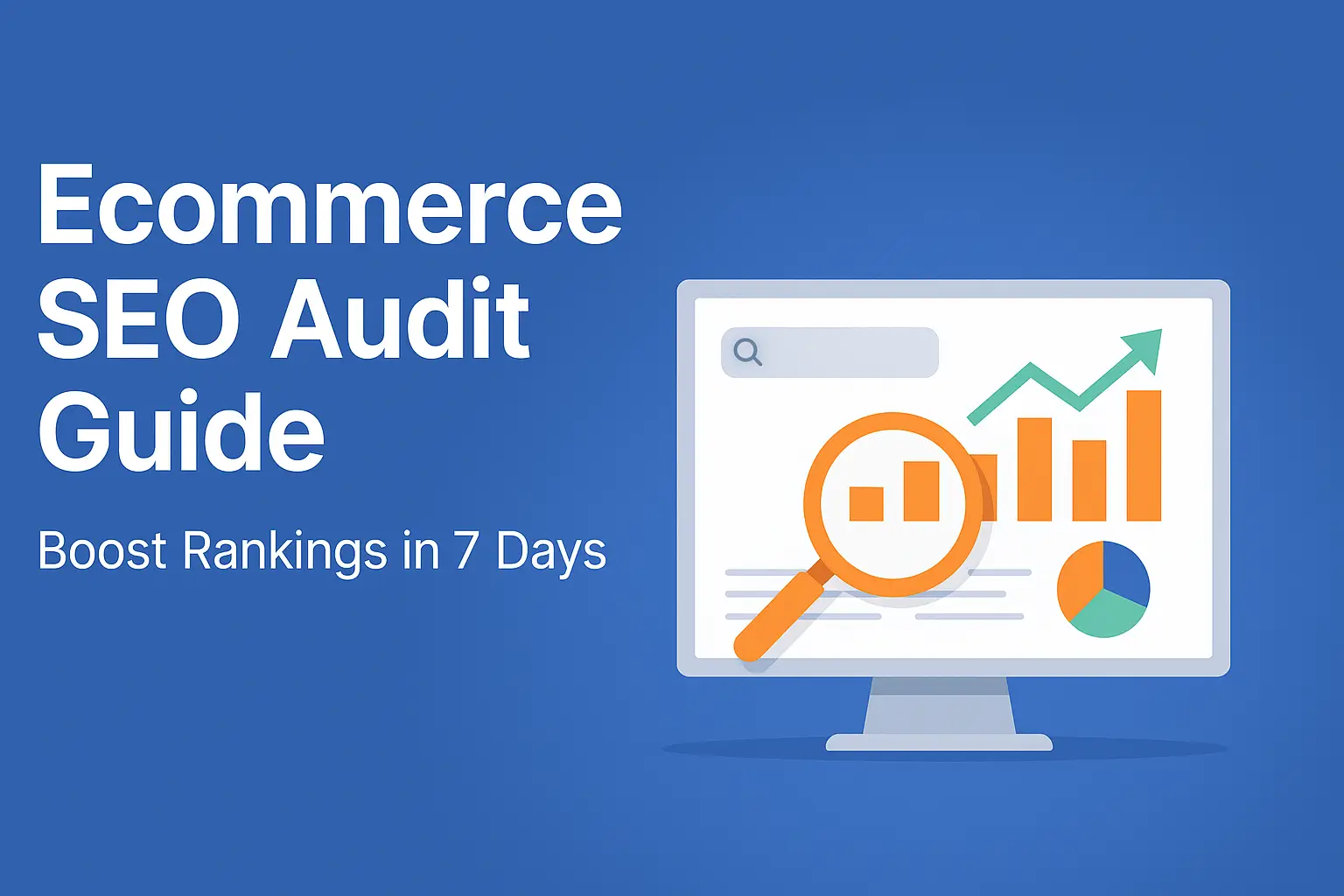
What You’ll Walk Away With (Outcomes First!)
- A repeatable, 7-day checklist you can plug into any store
- Clear definitions of technical, on-page, content, and authority issues
- Benchmarks to gauge success and assign priority to every task
- A lightweight scoring sheet you can hand straight to developers or freelancers
- Confidence that each fix moves the revenue needle—not just vanity metrics
Why Ecommerce SEO Audits Matter More Than Ever
Search has changed dramatically since Google rolled out its AI-generated results and tightened Core Web Vitals thresholds in 2025. Pages that once ranked because they “looked fine” now need to prove experience, expertise, authority, and trustworthiness. Regular ecommerce SEO audits expose hidden bottlenecks—broken canonicals, thin product copy, bloated JavaScript—that silently drain visibility. By uncovering those gaps before your competitors do, you safeguard organic traffic, cut ad spend, and deliver a smoother shopping journey for real people.
The Four Pillars of a High-Impact Audit
1. Technical Foundation
Crawlability and indexation sit at the core of every audit. Check robots.txt, XML sitemaps, HTTPS enforcement, Core Web Vitals, and proper canonical tags. If a crawler can’t reach or render a page, the best content on earth will never surface.
2. On-Page Signals
Unique product titles, descriptive URLs, and logical H1-to-H6 hierarchy send immediate relevance cues to search engines. Layer structured data—Product, Review, FAQ—to qualify for rich snippets that raise click-through rates.
3. Content & Semantic Relevance
Search intent now drives ranking. Well-researched category guides, updated product descriptions, and supporting blog posts bolster topical authority. Add multimedia such as unboxing videos or user-generated photos to increase dwell time.
4. Off-Page Authority
Backlinks remain a trust signal, but quality trumps quantity. Favor links from suppliers, magazines, and niche reviewers. Digital PR campaigns and influencer shout-outs build brand recognition while reinforcing E-E-A-T.

A 7-Day Blueprint for Ecommerce SEO Audits
Day 1 – Crawl & Map the Site
Spin up Screaming Frog or a similar crawler to reveal 404s, redirect chains, duplicate titles, and orphaned pages. Note crawl depth and ensure every money page is reachable within three clicks.
Day 2 – Fix Core Web Vitals
Run PageSpeed Insights and Lighthouse. Target Largest Contentful Paint under 2.5 s and Cumulative Layout Shift below 0.1. Compress hero images, defer non-critical JavaScript, and adopt modern image formats (WebP, AVIF).
Day 3 – Validate Structured Data
Paste URLs into Google’s Rich Result Test. Missing Product schema? Add price, SKU, availability, and rating markup. Proper JSON-LD unlocks star ratings and price ranges in the SERP.
Day 4 – Patch Content Gaps
List your keyword universe in a spreadsheet, then map each term to a live URL. Where intent lacks coverage, draft new category hubs or expand thin product descriptions to at least 300 words.
Day 5 – Audit Backlinks & Brand Mentions
Use Ahrefs or Majestic to spot toxic links and locate unlinked brand mentions ripe for outreach. Disavow spammy domains and pitch journalists or partners for contextual follow-ups.
Day 6 – Check International & Mobile UX
Verify hreflang tags, currency converters, and responsive design. Consolidate duplicate country folders and streamline mobile menus to a depth of two levels for quicker buying journeys.
Day 7 – Prioritize & Ship
Score every issue by Impact, Confidence, and Effort. High-impact, low-effort tasks—like adding missing alt attributes or fixing mis-typed canonical URLs—move to the top of the sprint. Share the roadmap with stakeholders and assign owners.
Running ecommerce SEO audits on a fixed rhythm (quarterly for large catalogs, bi-annually for small stores) keeps you agile, compliant with algorithm updates, and focused on the fixes that pay the biggest dividends.
Tool Stack (Lightweight & Budget-Friendly)
- Google Search Console – free crawl and performance snapshots
- Sitebulb / Screaming Frog – deep technical insights
- Core Web Vitals API – real-world performance trends
- Ahrefs / Semrush – keyword and backlink gap analysis
- Schema Markup Validator – instant JSON-LD feedback
Most tools offer free tiers, making ecommerce SEO audits accessible even to solo founders.
Common Pitfalls to Dodge
- Chasing perfect scores
A 100/100 Lighthouse grade feels good but won’t save a page that answers the wrong intent. Balance speed with relevance. - Ignoring inventory dynamics
Out-of-stock products that 404-waste link equity. Use 301s to parent pages or mark items “outOfStock” via structured data. - Fixing issues in isolation
Technical tweaks without content or authority upgrades rarely move rankings. Treat the four pillars as interlocking gears. - Not measuring impact
Without baseline metrics—indexed pages, organic revenue—there’s no way to prove an audit worked. Document KPIs before and after.
Mini Case Study: TrailHive Outdoor Gear
TrailHive, a mid-market outdoor retailer, scheduled two ecommerce SEO audits in 2024. The first revealed 1,200 duplicate SKU pages, sluggish LCP on mobile, and missing Product schema across 70 % of listings. After consolidating variants, compressing images, and deploying JSON-LD through Google Tag Manager, they cut average load time by 1.8 seconds and unlocked rich-snippet eligibility on 5,000 pages. Ninety days post-fix, organic clicks were up 41 percent and revenue from search sessions rose 34 percent—without a cent of extra ad spend. The lesson? Discipline plus data beats random fixes every time.
How to Measure Success After the Audit
- Organic Revenue Growth – ultimate north-star metric
- Indexed vs. Total URLs – indicator of crawl efficiency
- Impressions-to-Clicks Delta – shows stronger titles and schema in action
- Average LCP & CLS – snapshot of technical health
- Linking Root Domains – proxy for rising authority
Set a 90-day review window. If those metrics trend upward—even modestly—your ecommerce SEO audits paid off.
Conclusion: Turn Audits into a Competitive Flywheel
Algorithm updates will keep coming, but a structured habit of ecommerce SEO audits transforms guesswork into a growth engine. Beginners gain a clear checklist; professionals earn granular insights that justify budget and roadmap priorities. Block one week each quarter, run through the blueprint above, and watch your storefront climb rankings, capture loyal customers, and out-maneuver rivals who wait for problems to surface.
Ready to reclaim lost traffic? Fire up your crawler today and let the data drive your next sprint toward higher visibility and, more importantly, higher sales.
